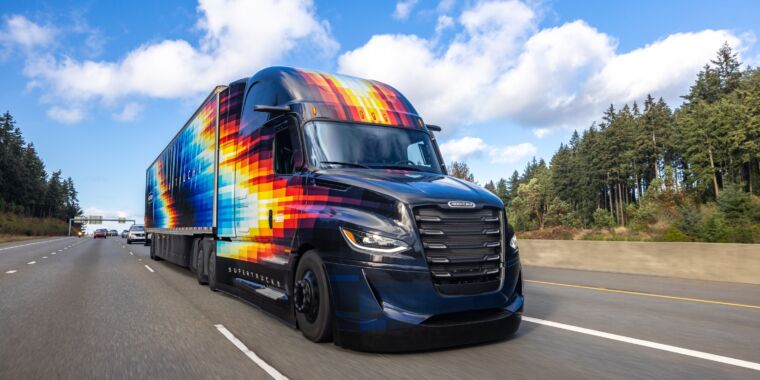- Messages
- 11,997
- Reaction score
- 2,587
- Points
- 238
A 50 percent more efficient big rig? Meet Super Truck II
In America, we move most of our stuff by road—trucks carried almost five times as much cargo as trains in 2017, according to the Bureau of Transportation Statistics. While it's true that personal vehicles contribute the majority of our transport-related carbon emissions, a quarter still comes from bigger trucks and buses. When it comes to the biggest trucks on our roads—the Class 8 trucks that can pull up to 80,000 lbs (36.2 tonnes)—there's a lot of room for improvement, which is where Super Truck II comes in. The Department of Energy funded a challenge to double the efficiency of 18-wheeler trucks, and the big machine you see in the photos here is Freightliner's response.In fact, the story dates back to 2010 and the first DoE Super Truck program, which eventually funded four truck makers (including Daimler Truck North America, which owns Freightliner) to develop a heavy truck with 50 percent better efficiency than anything then in production.
More:

A 50 percent more efficient big rig? Meet Super Truck II
It was achieved through a combo of aero, tire, and powertrain improvements.
